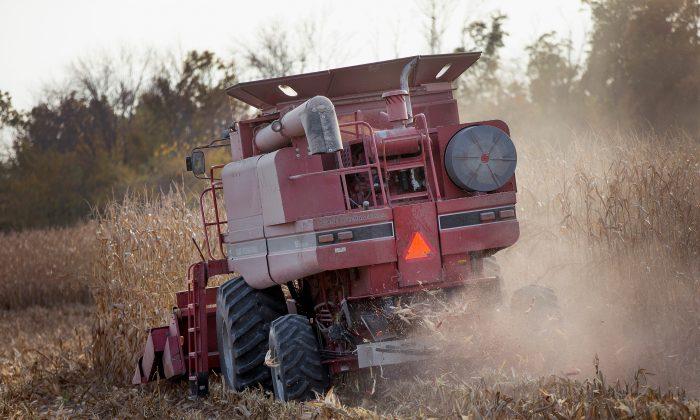Farmers, lumberjacks, and fishermen commit suicide more than workers in other industries in the United States, according to a new study released by the Centers for Disease Control (CDC) on June 30.
The study focuses on data from 2012, during which 40,000 suicides were reported in the country. Suicide was the 10th leading cause of death for people aged 16 and older.
The suicide rate from 2000 to 2012 among that age group jumped by 21 percent—from 13.3 per 100,000 to 16.1.
The CDC analyzed data organized by occupation from the National Violent Death Reporting System (NVDRS) for 12,312 suicides in 17 states in 2012.
Those working in the farming, fishing, and forestry group had the highest number of suicides overall—84.5 deaths by suicide per 100,000 population. Carpenters, miners, electricians, and construction trades followed. Mechanics and those who do installation, maintenance, and repair work were third on the list.
The highest rate of suicide among females was in protective service occupations, like police and firefighters, with 14.1 per 100,000, followed by legal industry workers and healthcare practitioners and technical.
On the other end of the spectrum, workers in the education, training, and library sectors had the lowest rate of suicide, at 7.5 per 100,000.
Occupational groups with higher suicide rates might be at risk for reasons like job-related issues including isolation, high demands, stressful work environments, and work-home imbalance; and socioeconomic inequities, including lower income, lower education level, and lack of access to health services, the report says.
SIDEBAR
Here is the CDC’s occupational suicide list organized by group, listed from highest to lowest:
- Farmworkers, fishermen, lumberjacks, others in forestry or agriculture
- Carpenters, miners, electricians, construction trades
- Mechanics and those who do installation, maintenance, repair
- Factory and production workers
- Architects, engineers
- Protective services, like police, firefighters, corrections workers
- Art, design, entertainment, sports, media
- Computer programmers, mathematicians, statisticians
- Transportation workers and material moving
- Corporate executives and managers, advertising and public relations
- Lawyers and workers in the legal system
- Health care workers, doctors, dentists
- Scientists and lab technicians
- Accountants, others in business, financial operations
- Nursing, medical assistants, health care support
- Community and social service
- Real estate agents, telemarketers, sales
- Building and ground, cleaning and maintenance
- Food preparation, food service workers
- Childcare workers, barbers, animal trainers, personal care and service
- Office workers, administrative support
- Education, training, librarians





Friends Read Free